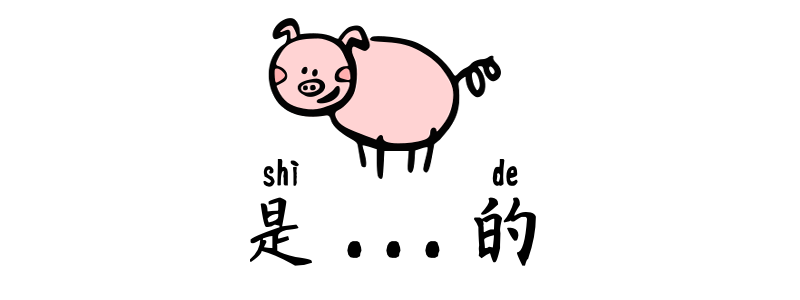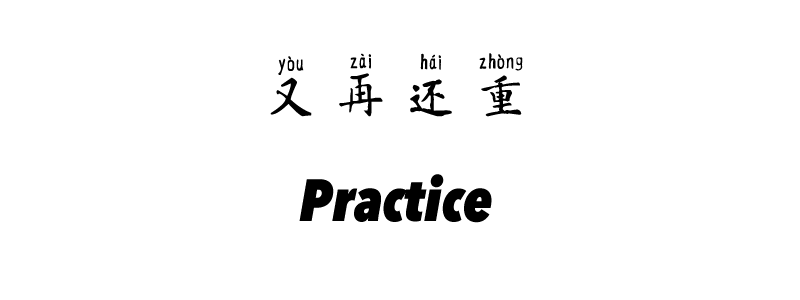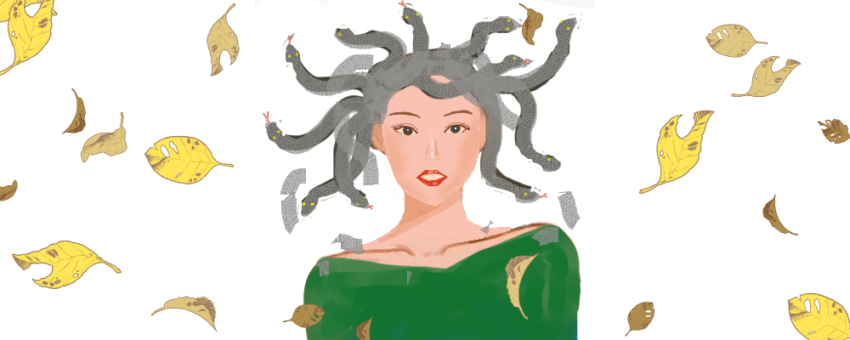Grammar Point:In Chinese, 就 jiù can be used to express “then” in a sentence, but it may not always be translated as such in English. We can use 就 jiù to indicate what action we should take after a particular situation is set in the first part of the sentence. Structure Set up situation +…
Author: tiffany
是 shì … 的 de Structure 1
Grammar Point: The 是 shì … 的 de structure is used in Chinese to provide emphasis on specific details of a past action or event. It is used to draw attention to the time, place, manner, or other specific details of an action or event, and to give additional information or explanation. This structure is…
Must 得 děi Grammar
Grammar Point:The Chinese grammar particle 得 děi is used to express the necessity or obligation to do something. It can be translated into English as “must,” “have to,” or “should.” I know it can be very confusing because it is the same character as 得 de, but actually, you can distinguish between them based on…
反而 fǎn’ér Grammar
Grammar Point:反而 fǎn’ér is an adverb that introduces an action or a situation that is contrary to the expectations of the speaker. It is often translated as “on the contrary,” “instead,” or “but rather.” Structure Clause A + S + 反而 + Clause B The first clause (Clause A) presents an expectation or assumption, while…
Wugang fagui 2
“Wugang fagui” is a story for HSK2+ learners. Stories I shared some are Chinese folk tales, and some are my creations. This story is one of the most famous stories associated with the Moon Festival. However, there are three different versions of it, each with slight variations. So, if you hear a different story, don’t…
Wugang fagui
“Wugang fagui” is a story for HSK2+ learners. Stories I shared some are Chinese folk tales, and some are my creations. This story is one of the most famous stories associated with the Moon Festival. However, there are three different versions of it, each with slight variations. So, if you hear a different story, don’t…
Synonyms of “Again” in Chinese – Practice
TouchHover over the space to see the answers. Fill in the correct word – 又/再/還还/重 這zhè麵miàn太tài好hǎo吃chī了le, 我wǒ吃chī完wán一碗yìwǎn了le, 但是dànshì( 還hái) 想xiǎng( 再zài) 吃chī一碗yìwǎn这zhè面miàn太tài好hǎo吃chī了le, 我wǒ吃chī完wán一碗yìwǎn了le, 但是dànshì( 还hái) 想xiǎng( 再zài) 吃chī一碗yìwǎnThese noodles are so good. I ate one bowl, but still want to eat another one. 自從zìcóng在zài台灣táiwān吃chī過guò一次yícì牛肉麵niúròumiàn後hòu, 我wǒ就jiù一直yìzhí想xiǎng( 再zài) 吃chī一次yícì自从zìcóng在zài台湾táiwān吃chī过guò一次yícì牛肉面niúròumiàn后hòu, 我wǒ就jiù一直yìzhí想xiǎng( 再zài) 吃chī一次yícìEver since I ate beef noodles…
Story – Medusa’s annoyance 4
“Medusa’s annoyance” is a story for HSK7+ learners. Stories I shared some are Chinese folk tales, and some are my creations. Warning most of my stories are not for kids. Listen the Complete Story Story Story Part 1 Story Part 2 Story Part 3 Story Part 4 美杜莎打開抽屜,拿出隱形眼鏡戴上,看著鏡中的自己難過得流下眼淚,頭上的蛇像是感覺到了主人的悲傷也一條條垂了下來。梅杜莎摸摸牠們自言自語的說:「你們知道嗎?故事裡的結局都是決定好的,不管是哪個版本,我的頭都會被砍下來。只要世人不改變,雅典娜和波賽頓就永遠是人生的贏家,死亡則是我唯一的結果。」 美杜莎打开抽屉,拿出隐形眼镜戴上,看着镜中的自己难过得流下眼泪,头上的蛇像是感觉到了主人的悲伤也一条条垂了下来。梅杜莎摸摸牠们自言自语的说:“你们知道吗?故事里的结局都是决定好的,不管是哪个版本,我的头都会被砍下来。只要世人不改变,雅典娜和波赛顿就永远是人生的赢家,死亡则是我唯一的结果。” Pinyin Měidùshā dǎkāi chōutì, ná chū yǐnxíng yǎnjìng dài shàng, kànzhe…
Story – Medusa’s annoyance 3
“Medusa’s annoyance” is a story for HSK7+ learners. Stories I shared some are Chinese folk tales, and some are my creations. Warning most of my stories are not for kids. Listen the Complete Story Story Story Part 1 Story Part 2 Story Part 3 Story Part 4 「你說這什麼話!你眼睛不舒服跟我可能被石化哪個更嚴重!總之你快點把隱形眼鏡戴上,去清廁所裡的頭髮啦!」說完雅典娜就生氣地離開了。 “你说这什么话!你眼睛不舒服跟我可能被石化哪个更严重!总之你快点把隐形眼镜戴上,去清厕所里的头发啦!” 说完雅典娜就生气地离开了。 這世界為什麼總是這樣呢?外貌好像決定了一切,雅典娜有著白皙的皮膚、金色柔軟的頭髮,所以被稱為女神,她所做的一切都是好的,都是被認同的;再看看被稱為女妖的自己,明明不斷地委屈自己,明明不斷地忍耐著,卻還是被人討厭,被世界厭惡。回想當初波賽頓(Poseidon)的事件,自己明明是個受害者,卻成為被處罰的人,真正的加害者卻可以繼續在世界上耀眼的生活。 这世界为什么总是这样呢?外貌好像决定了一切,雅典娜有着白皙的皮肤、金色柔软的头发,所以被称为女神,她所做的一切都是好的,都是被认同的;再看看被称为女妖的自己,明明不断地委屈自己,明明不断地忍耐着,却还是被人讨厌,被世界厌恶。回想当初波赛顿(Poseidon)的事件,自己明明是个受害者,却成为被处罚的人,真正的加害者却可以继续在世界上耀眼的生活。 Pinyin `Nǐ shuō zhè shénme huà! Nǐ yǎnjīng bù…
Story – Medusa’s annoyance 2
“Medusa’s annoyance” is a story for HSK7+ learners. Stories I shared some are Chinese folk tales, and some are my creations. Warning most of my stories are not for kids. Listen the Complete Story Story Story Part 1 Story Part 2 Story Part 3 Story Part 4 「美杜莎!!」房門外傳來室友雅典娜(Athena)的聲音。「浴室裡有蛇!!我說過了你洗完頭一定要打掃乾淨!」 “妳不要进来!” 美杜莎吓了一跳,赶快用手盖住自己的眼睛喊道 “我已经把隐形眼镜拿掉了,所以不要进来!” 「妳不要進來!」美杜莎嚇了一跳,趕快用手蓋住自己的眼睛喊道。「我已經把隱形眼鏡拿掉了,所以不要進來!」 门外的雅典娜收回了门把上的手,生气地说 :“你为什么现在就摘隐形眼镜,你难道不知道你的眼睛很危险吗?如果别人看到后被你石化怎么办啊!” 門外的雅典娜收回了門把上的手,生氣地說:“你為什麼現在就摘隱形眼鏡,你難道不知道你的眼睛很危險嗎?如果別人看到後被你石化怎麼辦啊!」 门外的雅典娜收回了门把上的手,生气地说:“你为什么现在就摘隐形眼镜,你难道不知道你的眼睛很危险吗?如果别人看到后被你石化怎么办啊!” 啊!煩死了!「我戴了一天的眼鏡,眼睛真的很乾很不舒服,而且我是在我的房間又沒有出去!」 啊!烦死了!“我戴了一天的眼镜,眼睛真的很干很不舒服,而且我是在我的房间又没有出去!” Pinyin Měidùshā wúnài de pāile…






